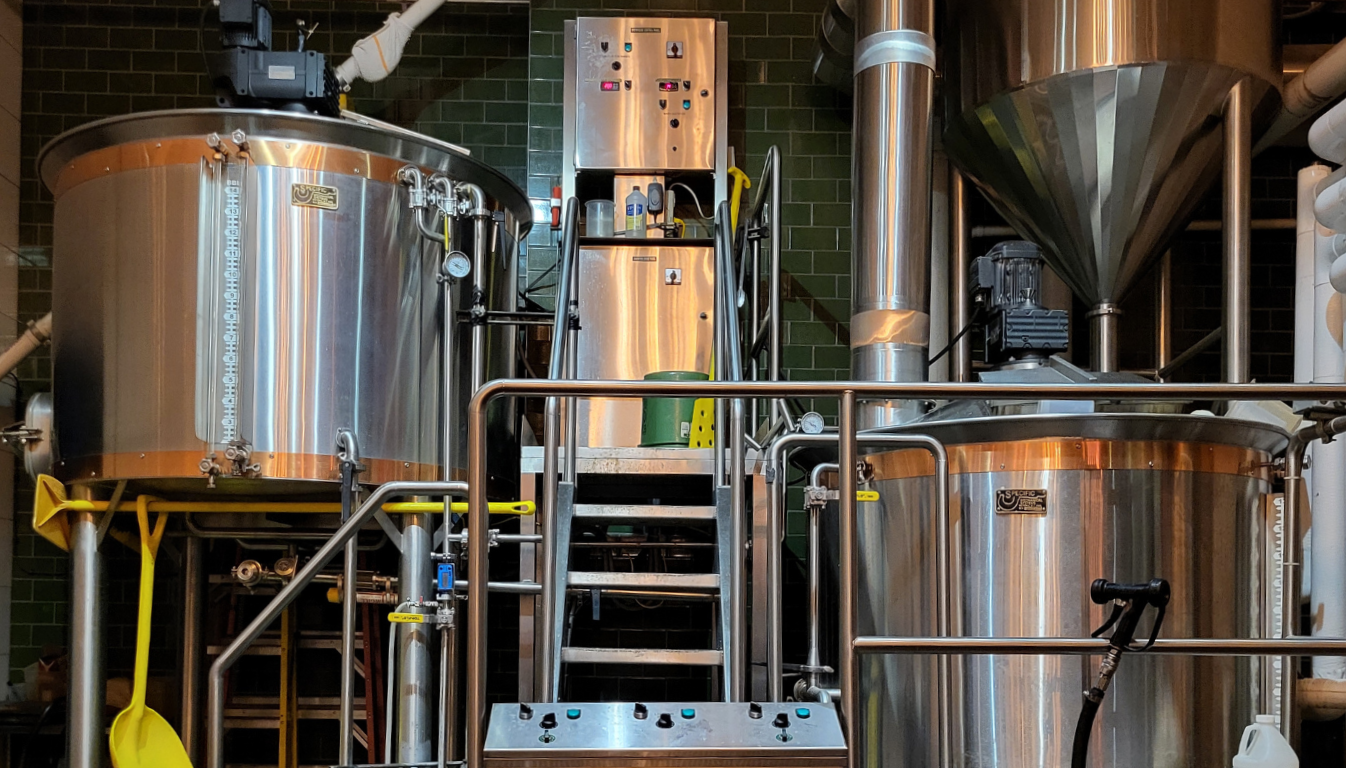Brewing is often a physical job, one involving interactions with hot elements, slick surfaces, and heavy machinery. Craft brewers have long touted the “hand-crafted” nature of their lower volume operations, suggesting it somehow improves the flavor or character of the beer. When it comes to most brewery operations, however, the intense manual labor involved in moving liquid around a brewery just stresses the bodies of workers rather than improves a beer’s body or nose.

Brewing Equipment featured expert topic supported by Chart Industries
Chart’s LN2 dosers support container pressurization and TPO reduction, and Earthly Labs’, SES’ and Howden’s carbon capture and compressor solutions enable breweries to capture CO2 emissions during fermentation process, boilers, or anaerobic digesters and reuse it onsite. ChartWater™ utilizes high recovery and low-energy water and wastewater treatment technologies, including the optimization of water reuse for sustainable, market-leading solutions.
Whether it’s manually moving sacks of grain, hauling kegs, or filling four and six pack holders, there are places in your brewery where automation may help save time, drive greater efficiencies, and help protect your workers.
In a seminar at a recent Craft Brewers Conference, Siemens offered several flexible and scalable automation solutions for small brewers. Acknowledging that many brewers share similar concerns about automation, ranging from the perceived prohibitive costs to how they would maintain such systems, Ed Montgomery an Industry Manager at Siemens suggested that brewers first look at their labor intensive processes.
Montgomery also recommends focusing on a centralized control system for managing the process while performing brewery tasks. He also highlighted the importance of flexibility and scalability. “As the brewery grows your control system must be flexible enough to grow
with your demands,” his presentation noted. “Having a scalable and flexible automation system ensures that you have the capacity to grow to meet your needs for the future without reengineering your system.”
In terms of automated control systems for brewing operations, the options range from simple panel based human machine interface (HMI) options, which help visualize the brewing process, all the way through advanced supervisory control and data acquisition (SCADA) models that help control, monitor, and analyze devices and processes across multiple systems, networks, and even different locations. These systems allow breweries to centralize their control options, including for brewhouse, cellar, and packaging operations, and can provide automatic sequencing, hold recipe formulas, and provide advanced data and analytics for trending and reporting. Some of these control systems can be operated and monitored via a mobile device to allow for off-site control and review.
As breweries grow, their focus often turns to maintaining consistency across batches, especially when the product is packaged and distributed for off-site consumption. This often requires some form of automation, especially where scaling an operation is continually at play. Time is a resource in short supply so having an automated inventory management system track raw materials all the way through finished products helps avoid waste and overproduction. This may involve selecting a point-of-sale system that tracks and notifies you of stock levels or systems that track use and supply of hops and malts.
Price is always one concern brewers have when considering automation options. IFM Efector suggests starting small, implementing smart sensors in key areas of the brewery. These include connected flow meters to measure flow rate and the amount of water supplied to the mash tun, temperature, and total volume, temperature sensors on tanks provide continuous monitoring during different brewing steps and with thresholds set to raise alarms if temperatures go outside set ranges, and pressure sensors for fermentation monitoring. These smart sensors can be connected to an HMI system to centralize and improve control over brewhouse, cellar, and packaging operations.
In addition, employing smart conductivity sensors in the clean-in-place (CIP) system can help cellar workers verify that chemicals have been fully removed from tanks before transferring a new batch. This helps workers move from a time-based CIP cycle to a data-driven process, leading to more effective tank cleaning while reducing resource usage. Such sensors can also help analyze time, temperature, and flow data to help cellar workers reduce water and heat usage without negatively impacting sanitation. Automatic pH meters can show when a tank is rinsed free of chemicals, which makes the process more cost-effective and sustainable.
As breweries grow, their need for reliable data increases. With more automated systems, including advanced HMI units, brewers can use analytics to improve efficiencies and increase capacity. Brewhouse HM dashboards can provide historical data of previous batches to compare to current brews to manage consistencies. Recipes can be changed on the fly to respond to data as it comes in. In the fermentation process, digital systems can assist brewers in better understanding the variables at play, including time, temperature, fill volume, and expected fermentation time. Some units offer predictive analytics to better understand possible areas to gain efficiency.
Additionally, breweries can consider controls to help automate other operations within the brewery, including automated valves to control the flow of liquids without manual work, pump speed controls to manage the flow rate of liquid moving around the brewery, rake speed controls to ensure a consistent mash and optimizing extraction of sugars from the grain, and energy management controls and alarms to alert you when a parameter leaves a set range, reducing energy loss and cost.
Batch tracking software assists brewers in maintaining consistency and also tracing ingredient usage across brewing dates. This can assist brewers in changing recipes based on consumer response or in-house analysis. This further allows breweries to maintain detailed records of each batch, including brewing parameters, fermentation data, quality control tests, and packaging information. This historical data enables breweries to analyze trends, identify areas for improvement, and maintain consistency in their products. Brewery staffers can spend less time on manual data entry and paperwork, allowing them to focus on brewing, recipe development, quality assurance, and other value-added activities.
For existing breweries concerned about retrofitting their operations, more options are available than many believe. The installation of small sensors and other instrumentation within your system can be achieved without a wholesale need to purchase additional equipment and at an affordable price. Installation can also occur without the need to take systems offline for days. Balancing immediate costs versus the long-term savings in terms of increased efficiencies in employee time spent and resource usage is the first conversation interested brewers should have with their suppliers.

